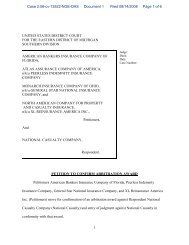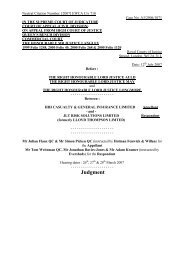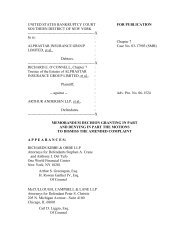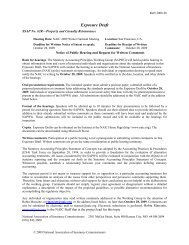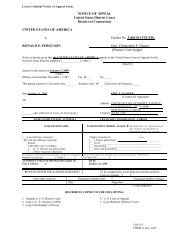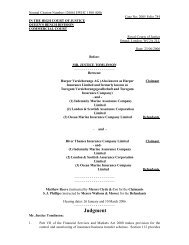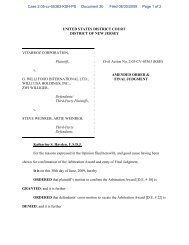Judgment - Reinsurance Focus
Judgment - Reinsurance Focus
Judgment - Reinsurance Focus
Create successful ePaper yourself
Turn your PDF publications into a flip-book with our unique Google optimized e-Paper software.
12.<br />
The construction which NHM sought to place on the general extension clause raises a<br />
number of difficult questions, both in relation to the language used and its commercial<br />
effect. These difficulties are compounded by the fact that, unlike the immediately<br />
following lines, the words themselves do not form a natural sentence. If the clause is<br />
to be read as containing a single coherent substantive provision, therefore, it is<br />
necessary to read some words into it in order to express its meaning fully. However,<br />
the very fact that it is necessary to do so causes one to question whether they can have<br />
been intended to bear the meaning suggested.<br />
The parties have suggested a number of different meanings for this clause at different stages<br />
in the course of the proceedings. The task of constructing a sensible unified provision<br />
has proved difficult, however, partly because of the presence of the word “Assured”,<br />
partly because of the references to loss payees and waivers of subrogation and partly<br />
because of the inclusion of the expression “as may be required”, which also appears<br />
in the section at the head of the slip identifying the assured. Before the judge NHM<br />
submitted that the general extension clause should be read as providing for additional<br />
assureds (among others) to be included in the cover as might be required by the<br />
assured identified earlier in the slip, but that construction runs into a number of<br />
difficulties. Since the insurers were never notified that Sembawang was to be covered,<br />
it was necessary for NHM to argue that the words “as may be required” meant no<br />
more than “as may be needed”, rather than “as may be demanded of underwriters”,<br />
but it is inherently unlikely that any insurer would undertake to treat as an insured<br />
under a policy of this kind a person of whose existence and interest he had not been<br />
notified. Even under a facultative/obligatory contract some declaration or notification<br />
to the insurer prior to the occurrence of the loss is normally required in order to render<br />
the insurer liable: see Glencore International AG v Alpina Insurance Company<br />
Limited [2004] 1 Lloyd's Rep. 111 at paragraphs 267-271. Although the insurer under<br />
such a contract is bound to accept the risk, he does at least have the opportunity of<br />
obtaining reinsurance, if he thinks it appropriate to do so.<br />
Two further constructions of the clause were discussed: (a) that “Assured” refers to the<br />
named assured in the section earlier in the slip identifying the assured and “Additional<br />
Assureds” to those identified by description rather than name; and (b) that “Assured”<br />
refers to all the assureds identified in that earlier section and “Additional Assureds” to<br />
entities that did not fall within the description of the assured at the time the slip was<br />
signed, but who might subsequently come within it. In either case, however, the<br />
suggestion was that the clause was intended to contain a substantive provision<br />
identifying the persons who are to be included in the cover. The judge preferred the<br />
latter construction, but, as he said, on neither view is Sembawang an assured under<br />
the policy.<br />
The construction preferred by the judge has the merit of enabling an entity which comes<br />
within the ambit of the original group during the course of the cover, whether as the<br />
result of an acquisition, a change in corporate structure, the conclusion of a joint<br />
venture agreement or however, to obtain the benefit of the group's insurance on<br />
notification to the insurers. To that extent it may be said to be consistent with



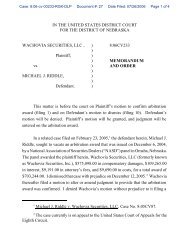
![202 Folio No 734 Neutral Citation Number: [2006] EWHC 1345 (QB ...](https://img.yumpu.com/50015000/1/184x260/202-folio-no-734-neutral-citation-number-2006-ewhc-1345-qb-.jpg?quality=85)
